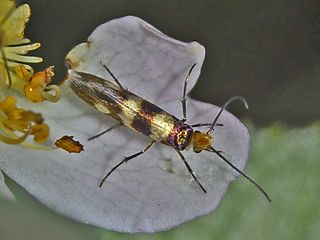
Hobart ( HOH-bart; is the capital and most populous city of the island state of Tasmania, Australia. Located in Tasmania's south-east on the estuary of the River Derwent, it is the southernmost capital city in Australia. Despite containing nearly half of Tasmania's population, Hobart is the least-populated Australian state capital city, and second-smallest by population and area after Darwin if territories are taken into account. Its skyline is dominated by the 1,271-metre kunanyi / Mount Wellington, and its harbour forms the second-deepest natural port in the world, with much of the city's waterfront consisting of reclaimed land. The metropolitan area is often referred to as Greater Hobart, to differentiate it from the City of Hobart, one of the seven local government areas that cover the city. It has a mild maritime climate.

Tasmania is an island state of Australia. It is located 240 kilometres to the south of the Australian mainland, and is separated from it by the Bass Strait. The state encompasses the main island of Tasmania, the 26th-largest island in the world, and the surrounding 1000 islands. It is Australia's least populous state, with 569,825 residents as of December 2021. The state capital and largest city is Hobart, with around 40% of the population living in the Greater Hobart area. Tasmania is the most decentralised state in Australia, with the lowest proportion of its residents living within its capital city.
Agathiphaga is a genus of moths, known as kauri moths. and is the only living genus in the family Agathiphagidae. This caddisfly-like lineage of primitive moths was first reported by Lionel Jack Dumbleton in 1952, as a new genus of Micropterigidae.

Micropterix aureatella is a moth of the family Micropterigidae found in the Palearctic realm, except for North Africa.

Micropterix calthella, the marsh marigold moth, is a species of moth belonging to the family Micropterigidae. It is found in damp habitats throughout Europe and is also distributed eastwards to central Siberia. It was first described by Carl Linnaeus in 1761 as Phalaena calthella.

Micropterix aruncella is a species of moth belonging to the family Micropterigidae, which is distributed throughout Europe. The imago was first described by Giovanni Antonio Scopoli in 1763. This species is one of the best known members of the family, being found in a wide range of habitats from sea level to over 2,000 metres (6,600 ft); the only habitat not favoured by this species is dense woodland.

Micropterix tunbergella is a moth of the family Micropterigidae found in most of Europe. The moths are very small and can be found feeding on the pollen of hawthorn, oak and sycamore. The larva and pupa are unknown. The moth was described Johan Christian Fabricius in 1787.

Micropterix allionella is a moth of the family Micropterigidae. It was described by Johan Christian Fabricius in 1794.
Micropterix facetella is a species of moth belonging to the family Micropterigidae, which was described by Zeller in 1851. Micropterix facetella has a 4 male facetalla to 1 female facetalla ratio and during the mating season female facetella are said to visit a flower, only to eat, and the male facetella are there for the purpose to mate. For the common ratio, the male facetella goes to a near by location that another male facetella was already there as a pursuit of competition. A competition on who will get the female first, which is why there is 4 males facetalla for every 1 female facetella. It is known from Croatia and Slovenia.
Micropterix fenestrellensis is a species of moth belonging to the family Micropterigidae. It was described by John Heath and T. Kaltenbach in 1984. It is known from Italy.
Tasmantrix is a genus of small primitive metallic moths in the family Micropterigidae.
Austromartyria porphyrodes is a moth of the family Micropterigidae. It is only known to be from the higher rainfall regions of the Atherton Tableland in northern Queensland.
Tasmantrix lunaris is a moth of the family Micropterigidae. It is known from eastern Australia, where it is known from two localities in the southern coastal forests of New South Wales.
Nannopterix choreutes is a moth of the family Micropterigidae. It is known from New Caledonia, from the Table Unio south to Rivière Bleue.

Baltimartyria is an extinct genus of primitive metallic moths in the family Micropterigidae. The genus is solely known from the Early Eocene Baltic amber deposits in the Baltic Sea region of Europe. The genus currently contains two described species, Baltimartyria proavitella and Baltimartyria rasnitsyni.

Sabatinca is a genus of small primitive metallic moths in the family Micropterigidae. Palaeomicra and Micropardalis were both established as subgenera of Sabatinca, but were both raised to generic level by Joël Minet in 1985. However, in 2014 both these genera, Palaeomicra and Micropardalis, were recognised by George Gibbs as synonyms of Sabatinca. Extinct species in this genus are known from the Cretaceous Burmese amber.
Squamicornia aequatoriella is a species of moth belonging to the family Micropterigidae. It was described by Kristensen & Nielsen in 1982. It is known from the Napo province in Ecuador.
Vietomartyria baishanzuna is a species of moth belonging to the family Micropterigidae. It was described in 1995. It is known from Zhejiang Province, China. It was described from Mount Baishanzu.

Micropterigoidea is the superfamily of "mandibulate archaic moths", all placed in the single family Micropterigidae, containing currently about twenty living genera. They are considered the most primitive extant lineage of lepidoptera, and the sole superfamily in the suborder Zeugloptera. The name comes from the Greek for mikros, little and pterux, a wing. Unique among the Lepidoptera, these moths have chewing mouthparts rather than a proboscis, and are seen feeding, often in large aggregations, on the pollen of the flowers of many herbaceous plants, shrubs and trees. The fossil record of the group goes back to the middle-late Jurassic with the earliest known species being Auliepterix from the Karabastau Formation in Kazakhstan.









